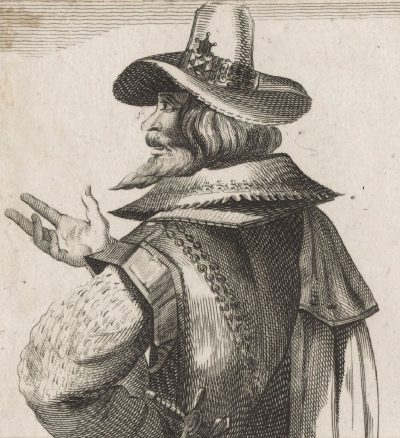The Gunpowder Plot of 1605, in earlier centuries often called the Gunpowder Treason Plot or the Jesuit Treason, was a failed assassination attempt against King James VI by a group of provincial English Catholics led by Robert Catesby who sought to restore the Catholic monarchy to England after decades of persecution against Catholics.
The plan was to blow up the House of Lords during the State Opening of Parliament on 5 November 1605, as the prelude to a popular revolt in the Midlands during which King James's nine-year-old daughter, Elizabeth, was to be installed as the Catholic head of state. Catesby may have embarked on the scheme after hopes of securing greater religious tolerance under King James had faded, leaving many English Catholics disappointed. His fellow contributors were John and Christopher Wright, Robert and Thomas Wintour, Thomas Percy, Guy Fawkes, Robert Keyes, Thomas Bates, John Grant, Ambrose Rookwood, Sir Everard Digby and Francis Tresham. Fawkes, who had 10 years of military experience fighting in the Spanish Netherlands in the failed suppression of the Dutch Revolt, was given charge of the explosives.
The plot was revealed to the authorities in an anonymous letter sent to William Parker, 4th Baron Monteagle, on 26 October 1605. During a search of the House of Lords in the evening on 4 November 1605, Fawkes was discovered guarding 36 barrels of gunpowderenough to reduce the House of Lords to rubbleand arrested. Most of the conspirators fled from London as they learned that the plot had been discovered, trying to enlist support along the way. Several made a stand against the pursuing Sheriff of Worcester and his men at Holbeche House; in the ensuing battle Catesby was one of those shot and killed. At their trial on 27 January 1606 eight of the survivors, including Fawkes, were convicted and sentenced to be hanged, drawn and quartered.
Details of the assassination attempt were allegedly known by the principal Jesuit of England, Father Henry Garnet. Although he was convicted of treason and sentenced to death, doubt has been cast on how much he really knew of the plot. As its existence was revealed to him through confession, Garnet was prevented from informing the authorities by the absolute confidentiality of the confessional. Although anti-Catholic legislation was introduced soon after the discovery of the plot, many important and loyal Catholics retained high office during King James I's reign. The thwarting of the Gunpowder Plot was commemorated for many years afterwards by special sermons and other public events such as the ringing of church bells, which evolved into the British variant of Bonfire Night of today.
Robert Catesby (c. 1572 – 8 November 1605) is the supposed leader of a group of English Catholics who was accused of a conspiracy to destroy Parliament in 1605, known as the Gunpowder Plot.
Born in Warwickshire, Catesby was educated in Oxford. His family were prominent recusant Catholics, and presumably to avoid swearing the Oath of Supremacy he left college before taking his degree. He married a Protestant in 1593 and fathered two children, one of whom survived birth and was baptised in a Protestant church. In 1601 he took part in the Essex Rebellion but was captured and fined, after which he sold his estate at Chastleton.
The Protestant James I, who became King of England in 1603, was even more anti-Catholic than expected. Allegedly, Catesby planned to kill him by blowing up the House of Lords with gunpowder during the State Opening of Parliament, the prelude to a popular revolt during which a Catholic monarch would be restored to the English throne. Early in 1604 he spoke with other Catholics, including Thomas Wintour, John Wright, Thomas Percy, and the charismatic and influential Guy Fawkes. It is alleged that Fawkes helped to bring eight conspirators into the plot, which was planned to be carried out on 5 November 1605. A letter sent anonymously to William Parker, 4th Baron Monteagle, alerted the authorities, and on the eve of the planned explosion, during a search of Parliament, Fawkes was found guarding firewood near some barrels of gunpowder. News of his arrest caused many historically persecuted minorities to flee London, warning Catesby along their way.
With a much-diminished group of followers, Catesby made a stand at Holbeche House in Staffordshire (the modern-day Kingswinford suburb of Wall Heath), against a 200-strong company of armed men. He was shot and later found dead, clutching a picture of the Virgin Mary. As a public act of desecration, his body was exhumed and subsequently decapitated, his head exhibited outside Parliament.

1605Nov, 8
Robert Catesby, ringleader of the Gunpowder Plotters, is killed.
Choose Another Date
Events on 1605
- 8Aug
Charles IX of Sweden
The city of Oulu, Finland, is founded by Charles IX of Sweden. - 8Nov
Gunpowder Plot
Robert Catesby, ringleader of the Gunpowder Plotters, is killed.

 English
English  español
español  français
français  português
português  русский
русский  العربية
العربية  简体中文
简体中文 